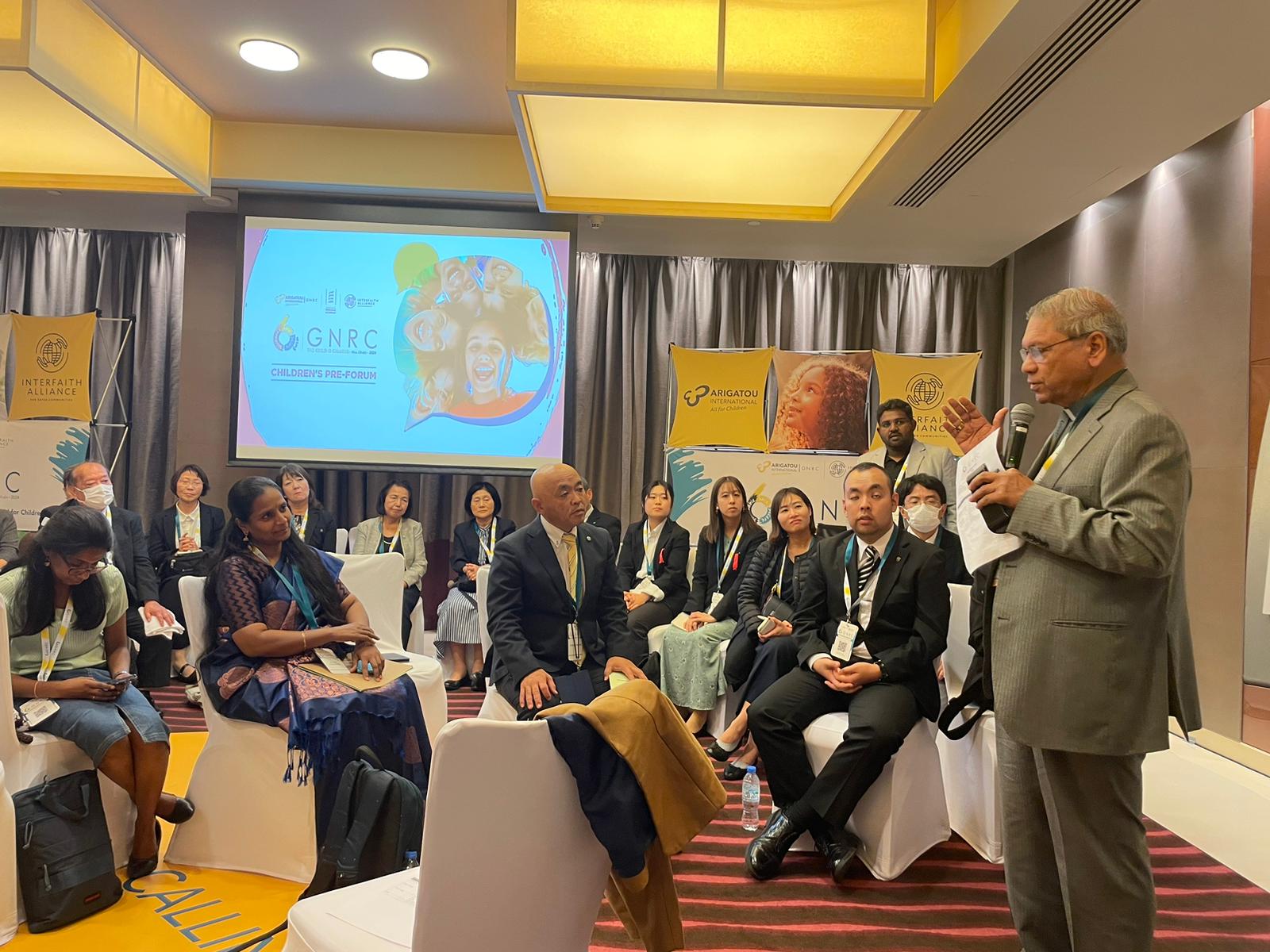World religions together in Abu Dhabi for children's rights
Coinciding with the UN's Day of Prayer and Action for Children, 20 November is also the Day of Prayer and Action for Children, an initiative born in Japan to harness the potential of religious communities to protect the welfare of the youngest children. In its sixth year, religious leaders, intergovernmental representatives and NGOs gathered in the United Arab Emirates to call for concrete action against violations of the rights enshrined in the UN Convention.
Abu Dhabi (AsiaNews) 900 participants from 67 nations representing the religions of the world, Judaism, Christianity, Islam, Hinduism and Buddism gathered in Abu Dhabi this week on the theme of the role of religious communities in ensuring a safe, secure and sustainable future for children worldwide in an increasingly difficult global context.
“The recent spike in the threats to children’s wellbeing, such as increased violence and weakened security undermine our religious communities” Kul Gautam, Chair of the Global Network of Religions for Children (GNRC), told participants, “these are challenges that no one country or religion can resolve alone,” he added.
GNRC was established through Arigatou International, whose founder Buddhist leader Reverend Takayasu Miyamoto was convinced of the urgent need to prioritize rights of children in peace work. In the 1990’s he began exploring the different environments that children were living in around the world and immediately identified the potential of tapping into the resource of religious communities as a priority channel to access welfare and protection systems for children at risk.
“At the time I was working at the Dicastery for Inter-religious Dialogue and I accompanied them in their work based around the UN Convention for the Rights of the Child,” says Archbishop Felix Machado of Nashik, India and founding member of the GNRC advisory committee. “Overtime a group of leaders coalesced around the fact the issue of the exploitation of children was transversal and transnational. While we did not want to supplant institutional actors, we believed that the first thing religious communities could do was to act and pray at a local level in intervention and prevention, and at a strategic international level, establishing a Day of Prayer and Action for Children, which coincides with the UN Day and the anniversary of the Convention.”
“Because of our global reach we knew we could and should do more for children in crisis situations around the world, whether abuse, neglect, war, poverty, discrimination. Here, there are four clear points emerging from this 6th forum. Firstly, we must always move forward together with children: We are working with and for children. The forum was preceded by three days of meeting with child delegates so they have an active and participatory voice.”
“Secondly we need to assess the current global situation of children and then to concretely move forward, less talk more action. Thirdly that despite widespread pessimism there is joy in hope that the children give us which builds our courage as leaders to do what is needed, building a mutual and intergenerational respect that is quite unique.”
And finally, the Indian prelate concludes “as a Catholic I witness the trickling down effect of Pope Francis, so the instance from all delegations across our religious diversity that we accompany children and not impose our ideas on them. Also, the theme of compassion informing our actions and commitment to vulnerable children, that we must work as religions in a cohesive collaborative way to promote children’s wellbeing as brothers and sisters in a common home beyond our religious divide”







.png)










